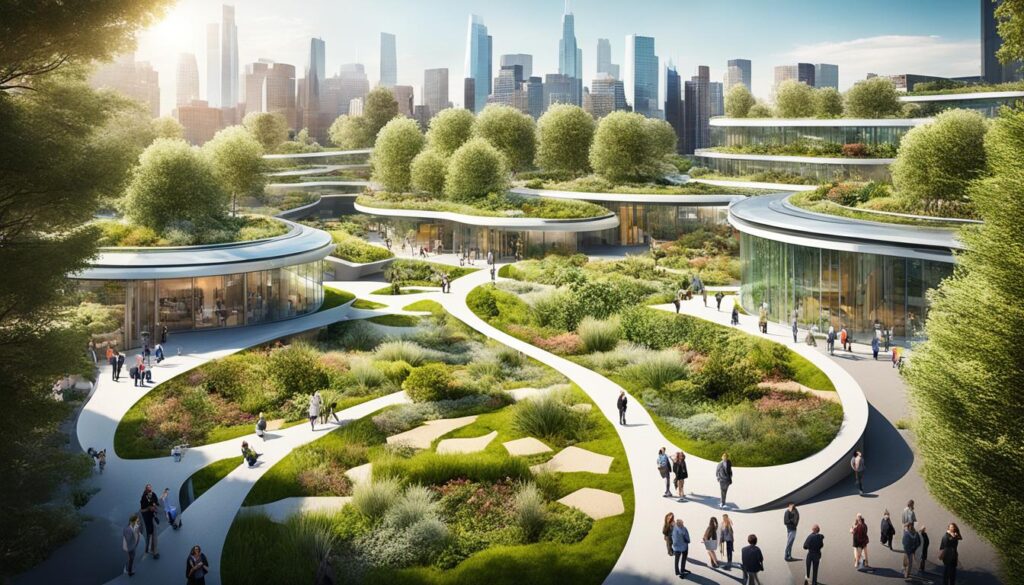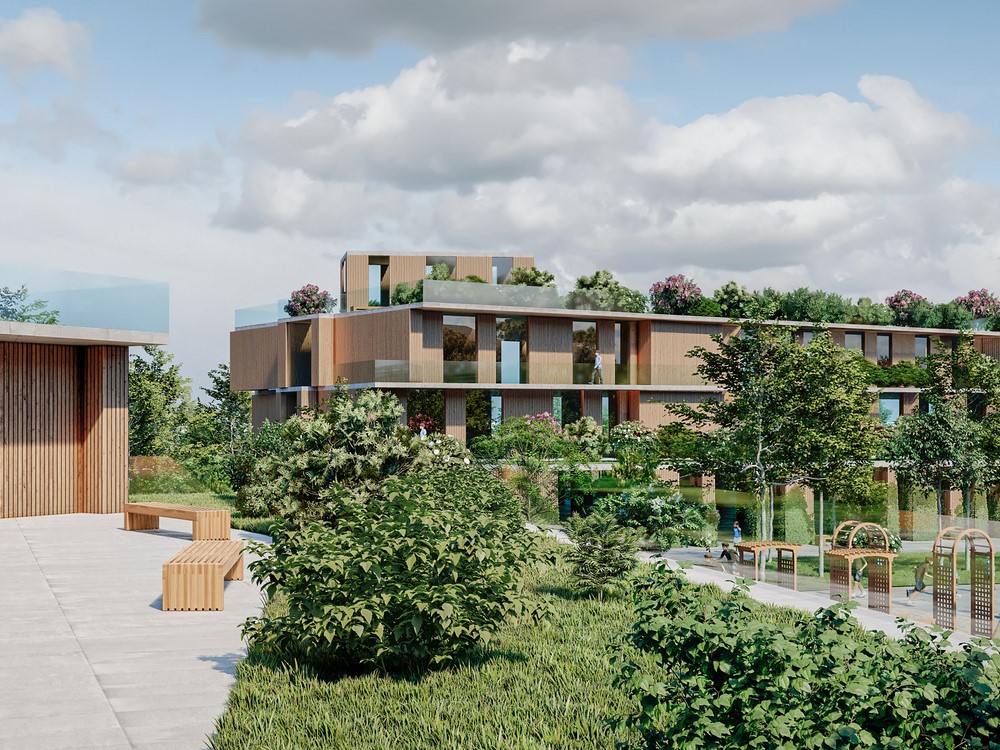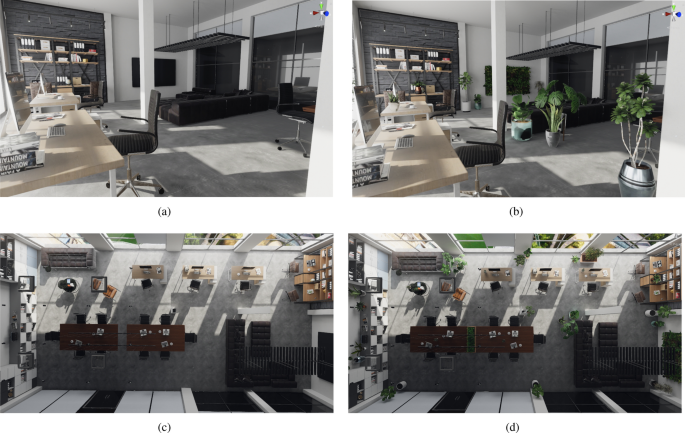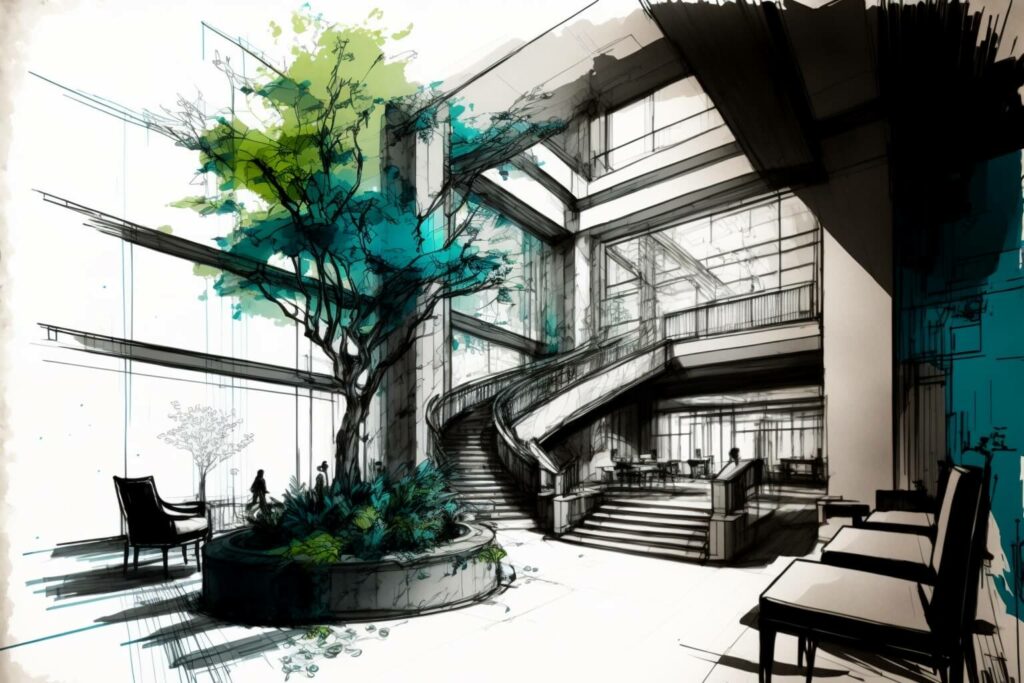Exploring the Benefits of Biophilic Urban Acoustics for a Harmonious Cityscape
In an increasingly urbanized world, the sounds that surround individuals significantly influence their quality of life.
Biophilic Urban Acoustics examines the integration of **natural soundscapes** into urban environments, fostering a harmonious relationship between **nature** and **urban living**.
This article elucidates the importance of **acoustic design** in urban planning, highlighting its benefits for **human health** and **well-being**, as well as practical strategies for implementation.
It explores how elements such as **natural sounds**, **water features**, and **green spaces** can transform urban landscapes into more serene and inviting environments.
What is Biophilic Urban Acoustics?
Biophilic Urban Acoustics pertains to the incorporation of soundscapes within urban settings to strengthen the connection between natural elements and urban residents.
By applying principles of biophilic design, urban planners can develop immersive environments that integrate natural features, thereby fostering a deeper human-nature connection and promoting psychological well-being.
This approach underscores the significance of sound ecology, concentrating on how urban acoustics can facilitate biodiversity enhancement and the establishment of restorative spaces that prioritize health benefits and tranquility.
Why is Biophilic Urban Acoustics Important?
Biophilic Urban Acoustics is a crucial aspect of urban development as it addresses the pressing challenges associated with noise pollution while enhancing overall urban livability through strategic planning and design.
By incorporating sound design into urban landscapes, it is possible to create harmonious environments that promote ecological restoration and contribute to the sustainability of cities.
The integration of natural sound elements serves to mitigate urban noise, thereby fostering community health and social sustainability through immersive sound experiences that significantly enhance the quality of life for residents.
What is the Relationship between Sound and Urban Design?
The relationship between sound and urban design is essential, as urban acoustics play a significant role in shaping the overall sound environment that impacts human experiences in public spaces.
By examining the interaction between sound and physical elements such as buildings, parks, and pathways, urban planners can develop environments that promote a positive auditory landscape. This can involve the strategic placement of green spaces that absorb noise or the selection of materials that enhance beneficial sounds, thereby fostering a connection to nature.
Incorporating soundscapes, such as water features or installations that attract birds, can provide calming auditory cues that enhance well-being. As urban areas continue to grow denser, the challenge lies in integrating these sound-focused strategies into existing urban frameworks to create harmonious environments. This approach ensures that sound and space work together to enrich daily experiences for all individuals.
How Does Biophilic Design Incorporate Acoustics?
Biophilic design integrates acoustics by effectively incorporating elements of nature into urban environments, thereby enhancing acoustic performance.
This approach utilizes nature-based solutions, such as sound isolation materials and green architecture, to create spaces that promote immersive auditory experiences while mitigating noise pollution.
By emphasizing acoustic comfort, biophilic design not only fosters a stronger connection between individuals and nature but also contributes to the psychological well-being of urban residents.
What are the Benefits of Biophilic Urban Acoustics?
The advantages of biophilic urban acoustics extend beyond mere visual appeal, providing substantial health benefits and enhancing the psychological well-being of urban residents. By establishing restorative spaces that emphasize natural soundscapes, communities can cultivate environmental aesthetics that foster tranquility and alleviate stress.
Biophilic urban acoustics not only encourages community engagement but also attracts individuals to public areas that resonate with their auditory preferences, ultimately contributing to the creation of more livable cities.
In these environments, the incorporation of nature-inspired sounds, such as water features and bird songs, facilitates a sense of connection to the natural world—an aspect that is frequently lacking in urban locales. This connection not only enhances mental health but also promotes greater social cohesion, as shared restorative spaces serve as gathering points for residents.
Acoustic considerations in urban design have the potential to transform neighborhoods into serene sanctuaries, thereby improving the quality of daily life and promoting overall well-being. By prioritizing soundscapes that reflect the beauty of nature, urban planners can redefine community dynamics, rendering cities not only more aesthetically pleasing but also healthier and more harmonious places to reside.
How Does Biophilic Urban Acoustics Impact Human Health and Well-being?
Biophilic urban acoustics play a significant role in influencing human health and well-being by creating environments that promote tranquility and mitigate stress through exposure to natural soundscapes.
By utilizing principles of nature therapy and enhancing auditory perception, urban ecosystems can develop spaces that contribute to mental resilience and overall health. The integration of these acoustic elements into city planning is essential to ensure that urban habitats support both physical and psychological well-being.
Envision a city where the gentle rustling of leaves, the distant sound of flowing water, or the melodic calls of birds replace the incessant noise of traffic and urban disturbances. These natural sounds are instrumental in alleviating anxiety and improving mood, effectively transforming urban areas into restorative sanctuaries.
The deliberate incorporation of biophilic design fosters a deeper connection to nature and encourages mindfulness, thereby promoting a culture of wellness within urban environments.
With strategic sound planning, the significance of auditory experiences can become a fundamental aspect of urban landscapes, enriching daily life and supporting healthier communities.
What are the Elements of Biophilic Urban Acoustics?
The elements of biophilic urban acoustics encompass a diverse range of natural elements and soundscapes that significantly enhance the auditory experience within urban environments.
These elements include the incorporation of green infrastructure, such as urban greenery and water features, which establish immersive environments that resonate with the sounds of nature. Through the thoughtful integration of these components into urban landscapes, planners can cultivate a harmonious atmosphere that promotes well-being and strengthens the connection to the natural world.
1. Natural Sounds
Natural sounds play a vital role in shaping urban soundscapes, providing auditory environments that significantly contribute to noise reduction and overall environmental sound quality. The inclusion of elements such as bird songs, rustling leaves, and flowing water enhances the sensory experience for urban residents, fostering a sense of tranquility and connection to nature within city settings.
These natural sounds counteract the often overwhelming noise of traffic and construction, thereby promoting mental well-being and enhancing resilience against stress. By implementing urban greening initiatives, such as parks and green roofs, cities can amplify these soothing sounds, creating a harmonious balance between human activity and the natural environment.
The presence of such sounds not only enhances the aesthetic appeal of neighborhoods but also encourages community interaction and engagement, as residents are drawn to spaces where they can experience the calming effects of nature. Ultimately, the thoughtful integration of these auditory elements has the potential to transform urban life, making it more livable and enjoyable.
2. Water Features
Water features are vital components of biophilic urban acoustics, functioning as both visual and auditory elements that enhance urban design. The calming sounds of flowing water contribute significantly to environmental aesthetics while promoting tranquility in public spaces, thereby making these areas more inviting for community engagement and relaxation.
These features serve as natural sound barriers, mitigating the urban noise that frequently overwhelms city life. The gentle murmur of water has the potential to transform an area into an oasis, where sound art permeates the atmosphere, providing a respite from the clamor of traffic and other urban activities.
By incorporating various types of water features, such as fountains and ponds, urban planners can design spaces that encourage peaceful interactions, fostering socialization and mindfulness among residents.
This integration of natural soundscapes not only enhances the sensory experience of urban environments but also emphasizes the role of nature in alleviating stress and improving overall well-being within the community.
3. Greenery and Vegetation
Greenery and vegetation are essential components of biophilic urban acoustics, providing crucial habitats that enhance biodiversity and promote connectivity with nature within urban environments.
The incorporation of diverse plant species contributes to a lush auditory experience, as the rustling of leaves and the presence of wildlife create a rich soundscape that resonates with urban residents.
These natural elements play a vital role in mitigating urban noise pollution while fostering a sense of tranquility and well-being among inhabitants.
By developing green corridors and parks, cities not only support a variety of plant and animal species but also facilitate wildlife movements, thereby enhancing ecological resilience.
This integration of nature into urban design fosters deeper connections between individuals and their environment, ultimately improving the overall quality of life.
The interplay of sounds from natural elements, such as flowing water and chirping birds, transforms urban soundscapes, providing relief from the overwhelming clamor of city life and encouraging individuals to engage more fully with their surroundings.
4. Natural Materials
The incorporation of natural materials in urban infrastructure is essential for optimizing acoustic performance and promoting sustainable design. These materials possess sound-absorbing properties that effectively reduce noise pollution, thereby fostering a more harmonious sound environment that aligns with the principles of biophilic design and enhances overall urban livability.
By integrating elements such as wood, bamboo, and earth-based composites, urban planners can significantly enhance the acoustic properties of both residential and commercial spaces. This approach minimizes the disruptive effects of urban noise, thereby contributing to healthier environments for inhabitants.
Along with improving acoustic performance, natural materials also enhance energy efficiency and facilitate carbon reduction, thereby reinforcing the connection between effective sound management and sustainability.
As urban areas continue to expand, the adoption of these natural solutions can lead to more resilient infrastructure, ultimately promoting well-being and environmental stewardship in densely populated settings.
5. Open Spaces
Open spaces play a critical role in biophilic urban acoustics, serving as public areas that enhance community health and foster restorative environments. These spaces provide opportunities for relaxation and social interaction while promoting a connection to nature through immersive sound experiences.
The soothing sounds of rustling leaves, chirping birds, and flowing water present in these areas significantly contribute to the well-being of urban residents. By thoughtfully incorporating these calming elements into urban planning, cities not only prioritize the physical health of their inhabitants but also cultivate mental resilience and emotional stability.
Integrating open spaces within densely populated regions can markedly improve air quality and offer a serene refuge from the chaos of urban life. Therefore, a commitment to designing these restorative environments is an essential component of sustainable urban development and community cohesion.
How Can Biophilic Urban Acoustics be Implemented in Urban Design?
Implementing biophilic urban acoustics in urban design encompasses a comprehensive approach that emphasizes community engagement and the utilization of sound-absorbing materials.
By incorporating nature-based solutions that align with urban ecosystems, planners can develop environments that embody the principles of sustainability while simultaneously improving the overall auditory experience within urban settings.
1. Incorporating Natural Elements
Incorporating natural elements into urban planning is a fundamental component of biophilic design that significantly enhances soundscapes and improves urban habitats. By strategically positioning trees, gardens, and other greenery, urban planners can create environments that support biodiversity and foster a connection to nature.
This approach not only alleviates noise pollution, as foliage serves as a natural sound barrier, but it also cultivates a sense of tranquility amidst the hustle and bustle of urban life. Features such as green roofs, vertical gardens, and water elements further enrich these soundscapes, creating a harmonious integration of urban and natural environments.
Urban planners should also take into account the development of community spaces that incorporate native plants, which can increase ecological value and attract local wildlife. Such deliberate integration of natural elements ultimately contributes to healthier, more resilient urban areas, promoting well-being and sustainability.
2. Sound-absorbing Materials
The utilization of sound-absorbing materials in urban design is vital for achieving noise reduction and ensuring acoustic comfort within public spaces. These materials can be seamlessly integrated into various elements of green architecture, contributing to the establishment of quiet zones that enhance the overall sensory experience for urban residents.
By incorporating features such as acoustic panels, green roofs, and specially designed pavements, urban planners can significantly reduce the noise associated with urban life. This approach not only fosters a more tranquil environment but also promotes social interaction, mental well-being, and physical health among residents.
As cities expand and the demand for sustainable living intensifies, the adoption of sound-absorbing solutions becomes imperative for the creation of harmonious urban landscapes.
Therefore, integrating these innovative materials into urban design is not merely an option but a necessity for cultivating thriving, livable spaces that prioritize the well-being of their communities.
3. Strategic Placement of Buildings and Structures
The strategic placement of buildings and structures is a crucial factor in shaping the acoustic environment of urban areas, influencing the manner in which sound travels and interacts within the community.
By incorporating sound dynamics into urban planning, professionals can effectively mitigate noise pollution and enhance community health through the creation of improved acoustic landscapes.
This careful consideration goes beyond aesthetics, as it has a significant impact on the quality of life for residents. For example, situating parks and community spaces in proximity to residential areas establishes natural buffers against urban noise, thereby fostering a more tranquil atmosphere.
Additionally, employing sound-absorbing materials and orienting buildings to deflect noise from busy roadways can contribute to the creation of more harmonious environments.
As municipalities place greater emphasis on integrating greenery and water features, they not only support biodiversity but also harness the calming effects these elements offer to the auditory landscape.
Ultimately, strategic urban design serves to cultivate healthier, more vibrant communities, where the sound environment actively supports well-being and facilitates social interaction.
4. Designing for Quiet Spaces
Designing quiet spaces within urban environments is essential for promoting tranquility and creating restorative settings that foster overall well-being. By incorporating elements that enhance acoustic performance, such as vegetation and sound-absorbing materials, urban planners can develop areas where individuals can find respite from the pervasive noise of city life.
Implementing features such as green walls, water elements, and strategically positioned seating can significantly reduce urban noise levels while encouraging relaxation and contemplation. Parks and gardens that integrate natural barriers further enhance sound insulation, creating inviting retreats amid the urban bustle.
The use of materials that dampen sound—such as rubberized surfaces and textured pavements—can effectively mitigate the impact of traffic and construction noise. By prioritizing these design strategies, cities not only cultivate peaceful havens but also promote mental health and community cohesion, transforming public spaces into vital oases that enhance the overall quality of life for residents.
5. Community Involvement
Community involvement is crucial in the implementation of biophilic design, ensuring that urban planning aligns with the needs and desires of residents. By actively engaging the public in the design process, cities can develop spaces that promote social sustainability and enhance the overall auditory experience for all inhabitants.
This collaborative approach facilitates a deeper understanding of how sound interacts with the environment, ultimately leading to designs that accommodate the specific acoustic preferences of the community. Incorporating elements such as green roofs, living walls, and natural sound barriers can significantly reduce noise pollution, resulting in more tranquil urban areas.
When community members participate in discussions regarding public engagement, they are more inclined to appreciate and utilize these spaces, fostering a stronger sense of ownership.
By actively involving residents in the design dialogue, urban planners can ensure that biophilic elements resonate with the community’s values, thereby creating harmonious urban landscapes that support both people and nature.
Frequently Asked Questions
What is biophilic urban acoustics?
Biophilic urban acoustics is the study of how natural sounds, such as those found in nature, can be integrated into urban environments to improve the overall acoustic experience and create a more harmonious relationship between people and nature.
Why is biophilic urban acoustics important?
Biophilic urban acoustics is important because it has been shown to have a positive impact on human health and well-being. By incorporating natural sounds into urban environments, it can reduce stress, improve cognitive function, and create a more pleasant and calming atmosphere.
What are some examples of biophilic urban acoustics?
Examples of biophilic urban acoustics include the use of natural materials, such as wood and stone, in buildings and public spaces to absorb sound and create a more natural acoustic environment. Other examples include the use of water features or green spaces to introduce natural sounds into urban areas.
How can biophilic urban acoustics be implemented in cities?
Biophilic urban acoustics can be implemented in cities through thoughtful urban design and planning. This can include incorporating natural elements, such as vegetation and water features, into public spaces, as well as using sound-absorbing materials in buildings and infrastructure.
What are the benefits of incorporating biophilic urban acoustics?
The benefits of incorporating biophilic urban acoustics include improved mental and physical health, increased productivity and focus, and a more enjoyable and harmonious urban environment. It can also help reduce noise pollution and create a more sustainable and resilient city.
Are there any challenges associated with implementing biophilic urban acoustics?
One challenge of implementing biophilic urban acoustics is the lack of understanding and awareness among urban planners and developers. There may also be limitations in terms of available space and budget constraints. Additionally, it is important to carefully consider the impact of introducing new sounds into an environment and ensure they do not disrupt the existing acoustic balance.

I’m Bruno, an architect with a deep passion for Biophilic Design in Urban Architecture. Throughout my career, I’ve focused on integrating natural elements into urban planning, and I created this site to share my insights and foster a deeper understanding of how biophilic principles can significantly enhance urban living. Dedicated to sustainable development, I continually explore innovative design solutions that promote both environmental and human well-being in city landscapes.














Publicar comentário